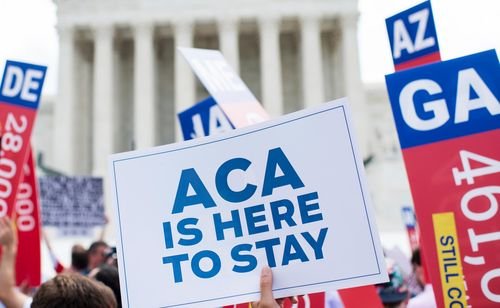Here’s what Biden’s Obamacare executive order means for you

President Joe Biden has promised to make health care more affordable and available. His executive order Thursday takes one immediate step in that direction.
As a result of his action, the Department of Health and Human Services is set to reopen enrollment on the federal Affordable Care Act exchange between February 15 and May 15.
This would give Americans who missed the most recent sign-up period, which ended December 15, access to Obamacare policies — and to federal assistance to pay for them. Roughly 15 million uninsured people could benefit, according to the Kaiser Family Foundation.
Nearly 9 million of them could qualify for free or subsidized coverage, according to the Kaiser Family Foundation. Individuals making up to about $51,000 and families of four earning up to about $104,800 are eligible for subsidies.
Some 36 states use the federal exchange, healthcare.gov, for enrollment. But most, if not all, of the states that run their own marketplaces are also expected to launch special sign-up periods, according to a White House official.
Still, it’s unclear how many people will take advantage of the chance to select an Obamacare policy.
The Biden administration is promising to conduct a “robust outreach” effort to make these folks aware of the opportunity and help them sign up, the official said. It will include paid advertising, direct outreach to consumers and partnerships with community organizations.
Here are the executive actions Biden has signed so far
The Trump administration, by contrast, deeply slashed marketing and enrollment assistance during its four years in office. President Donald Trump also refused to reopen the federal exchange last spring as the coronavirus pandemic ravaged the nation and the economy. Most state-based marketplaces did provide special enrollment periods.
People have always been able to sign up for Affordable Care Act coverage outside of the main enrollment period, which ran for six weeks starting November 1 under the Trump administration. But it’s generally limited to those who’ve lost their work-based coverage or have had a major life change, such as a divorce. Also, consumers who want to take advantage of it have to provide documentation that they meet the criteria, and the newly jobless have only 60 days after losing coverage to pick an Obamacare policy.
Those signing up under the new special enrollment period won’t face those constraints.
More measures coming in the future
Reopening the federal exchange is far from the last move Biden will make on health care. But many of the other efforts will take much longer, in part because they would require reversing or changing rules, waivers and demonstration projects put in place by the Trump administration.
As part of Thursday’s executive measures, Biden is starting the process. He is directing federal agencies to re-examine a multitude of actions taken by his predecessor. They include policies that weaken protections for people with pre-existing conditions and that undermine the Obamacare exchanges or other health insurance markets.
He also wants agencies to review measures that make it more difficult to enroll in Medicaid and the Affordable Care Act and that reduce affordability or financial assistance, including for dependents.
And the President is asking agencies to look at Affordable Care Act and Medicaid waivers and demonstration projects that the Trump administration approved or put in place that may reduce coverage or undermine the programs, including work requirements.
The agencies will also consider whether additional actions are needed to strengthen and protect access to health care.
In addition, the President signed a presidential memorandum on Thursday to reverse restrictions on abortion access domestically and abroad imposed and expanded by the Trump administration, according to the Biden administration.
Other actions require Congress
Biden also needs Congress to fulfill his campaign promises to increase the number of insured Americans by strengthening the Affordable Care Act.
His two main measures — creating a government-run public option and increasing Obamacare’s federal premium subsidies — require approval from lawmakers and already face plenty of opposition.
The President included a proposal to boost Affordable Care Act subsidies so that consumers don’t pay more than 8.5% of their income for coverage in his $1.9 trillion relief package, which is already encountering hurdles on Capitol Hill.